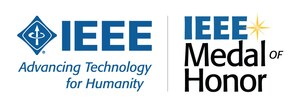From Solar Paint to Instantly Charged Batteries, IEEE Experts Say the Future Looks Big for Nano
IEEE NANO 2011 Conference Illustrates IEEE Leadership in Advancing Nanotechnology in Healthcare, Electronics, Energy, and Other Fields
PISCATAWAY, N.J., Aug. 11, 2011 /PRNewswire/ -- It's been said that big things come in small packages. But according to experts at IEEE, the world's largest professional technical association, some of the technology innovations and devices that could make the biggest impact in our world are so small millions of them could fit on the head of a pin. These game-changing advancements in nanotechnology, or the "science of small things," are transforming the way researchers are approaching how to solve some of our world's greatest challenges.
How about solar cells embedded in paint to turn your house into one big solar panel? Or "quantum dots" that attack cancer, cell by cell, while leaving healthy tissue untouched? Or batteries for mobile phones that charge in seconds instead of hours?
Nanotechnology is the area of engineering that involves working with materials or developing devices that are smaller than 100 nanometers in at least one dimension. That's about 1,000 times narrower than the width of the average human hair. While most electronic technologies today already use nanotechnology, many of these new applications take it to an extreme. Working at the atomic and molecular levels, also known as the quantum realm, the very mechanical, thermal, and catalytic properties of materials can change.
"The challenge to making all these nanotechnology applications mainstream comes down to how we affordably and efficiently get them in the hands of people for practical use," said Jo-Won Lee, IEEE Member and chair professor at the Department of Convergence Nanoscience, Hanyang University in Seoul, South Korea. Traditional manufacturing doesn't usually work at the nano-level, but there is a better way being developed, he said. It's called self-assembly, which essentially means the nanodevices build themselves, much like molecules form in nature to create larger systems.
IEEE and its members are playing a major role in making nanotechnology work in the real world. For example, the IEEE Nanotechnology Council advances and coordinates work in the field, including the theory, design, and development of nanotechnology and its scientific, engineering, and industrial applications.
One of the highlights of the council's efforts this year is the 11th annual IEEE NANO 2011 Conference, 15-19 August, 2011, in Portland, Ore. International scientists and practitioners representing more than 20 IEEE societies will meet to collaborate on new areas of nanotechnology study, as well as see nanotechnologies at work in both their own and related fields.
Dr. Alexander Balandin, IEEE Senior Member, Chair of the Materials Science and Engineering (MS&E) program at the University of California – Riverside and recipient of the IEEE Pioneer of Nanotechnology Award for 2011, offers one intriguing example: "Research is being done to achieve better control of electron interaction with photons, which could lead to much more efficient and less expensive photovoltaic solar cells. This not only benefits existing solar applications, but in the future these nanomaterials could be commercialized as a solar paint that is sprayed on homes and buildings, forever changing the dynamics of our existing electrical grid."
Significant advances are also occurring in healthcare. For example, research is being done around nanosensors that could be injected into the skin to more effectively monitor health conditions such as diabetes. In treating cancer, the most targeted efforts available today do almost as much harm as good, because many chemotherapies are nearly as toxic to the body as to the cancer cells they are meant to eradicate. But by using chemically tuned nanocrystals, called quantum dots, doctors can selectively attack cancer cells while leaving healthy cells alone.
IEEE experts also believe the incremental gains made in recent years in battery performance can be dramatically accelerated with nanotechnologies. "There's potential that you'll be able to fully charge your smart phone or laptop in a matter of seconds, instead of an hour," said Dr. Joao Zuffo, IEEE Life Member and founder of the Laboratorio de Sistemas Integraveis at the Universidade de Sao Paulo in Brazil. "Likewise, the unique properties of nanomaterials such as graphene could improve battery storage capacity for electric vehicles due to the material's very high surface to volume ratio, making it a more affordable and sustainable option compared to using fossil fuels."
Additional IEEE resources on nanotechnology include:
- IEEE Spectrum Nanoclast Blog video on recent nanomaterial discovery - http://spectrum.ieee.org/nanoclast/semiconductors/nanotechnology/paradigm-shift-in-understanding-of-biology-could-alter-electronics
- Video of IEEE nanotechnology expert discussing the promise of nanoelectronics - http://www.youtube.com/watch?v=jdqP7P3M9z4
- IEEE Spectrum article on a new nanodevice that could dramatically speed optical communications - http://spectrum.ieee.org/semiconductors/optoelectronics/graphene-device-modulates-light
For more information on IEEE, or to speak with a member about the future of nanotechnology, please contact: [email protected].
About IEEE
IEEE, the world's largest technical professional association, is dedicated to advancing technology for the benefit of humanity. Through its highly cited publications, conferences, technology standards, and professional and educational activities, IEEE is the trusted voice on a wide variety of areas ranging from aerospace systems, computers and telecommunications to biomedical engineering, electric power and consumer electronics. Learn more: http://www.ieee.org.
SOURCE IEEE
WANT YOUR COMPANY'S NEWS FEATURED ON PRNEWSWIRE.COM?
Newsrooms &
Influencers
Digital Media
Outlets
Journalists
Opted In






Share this article